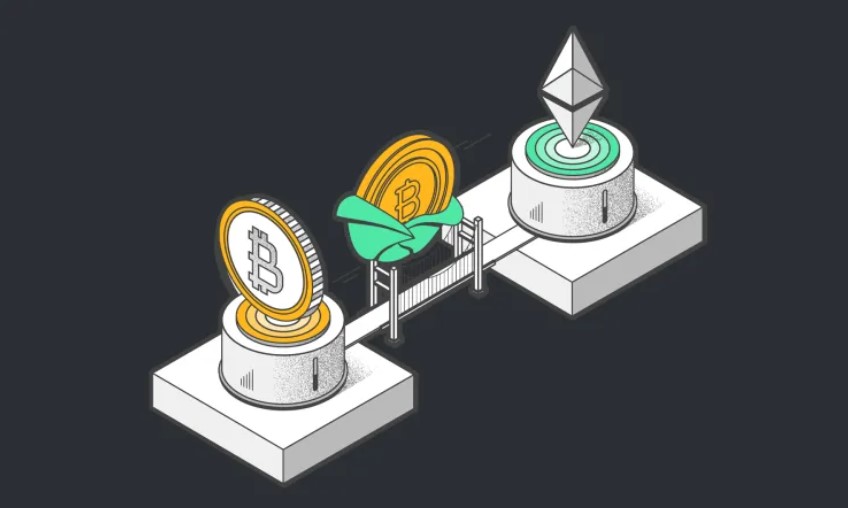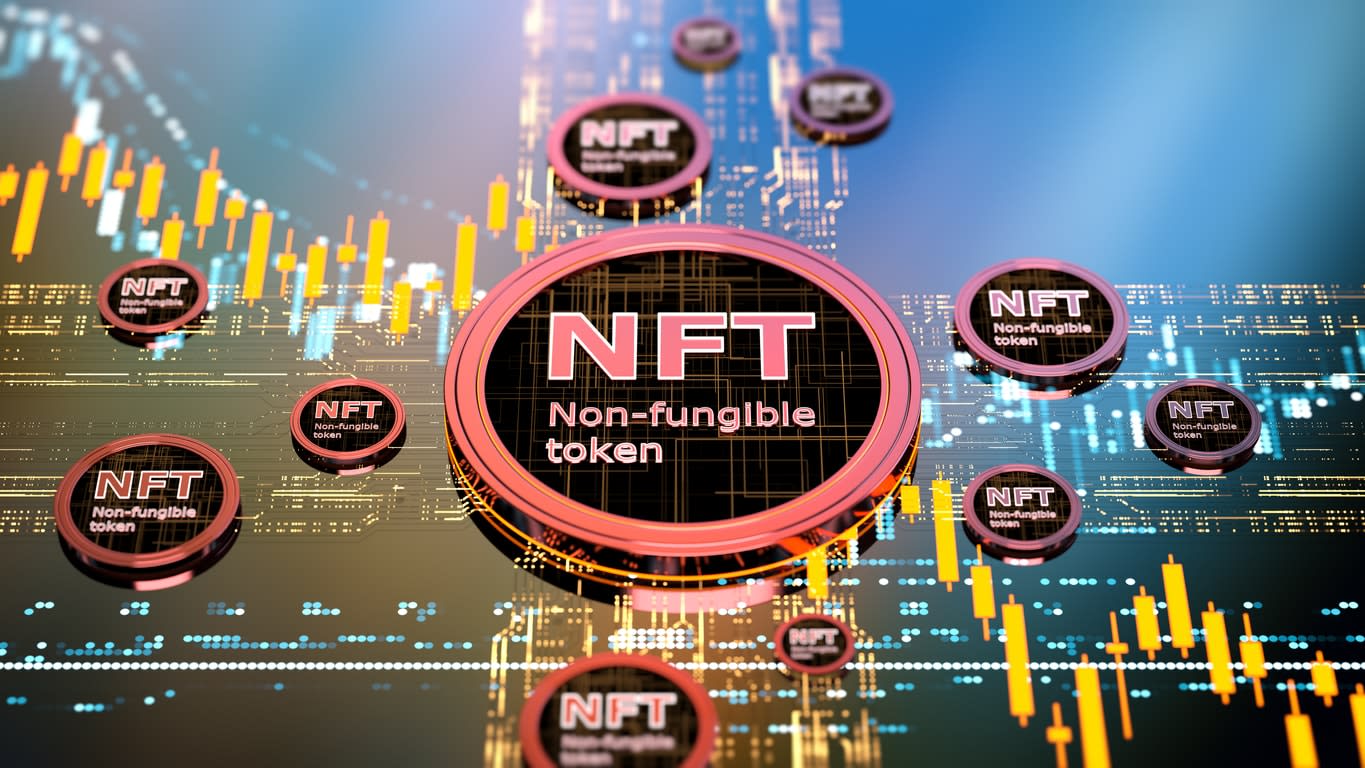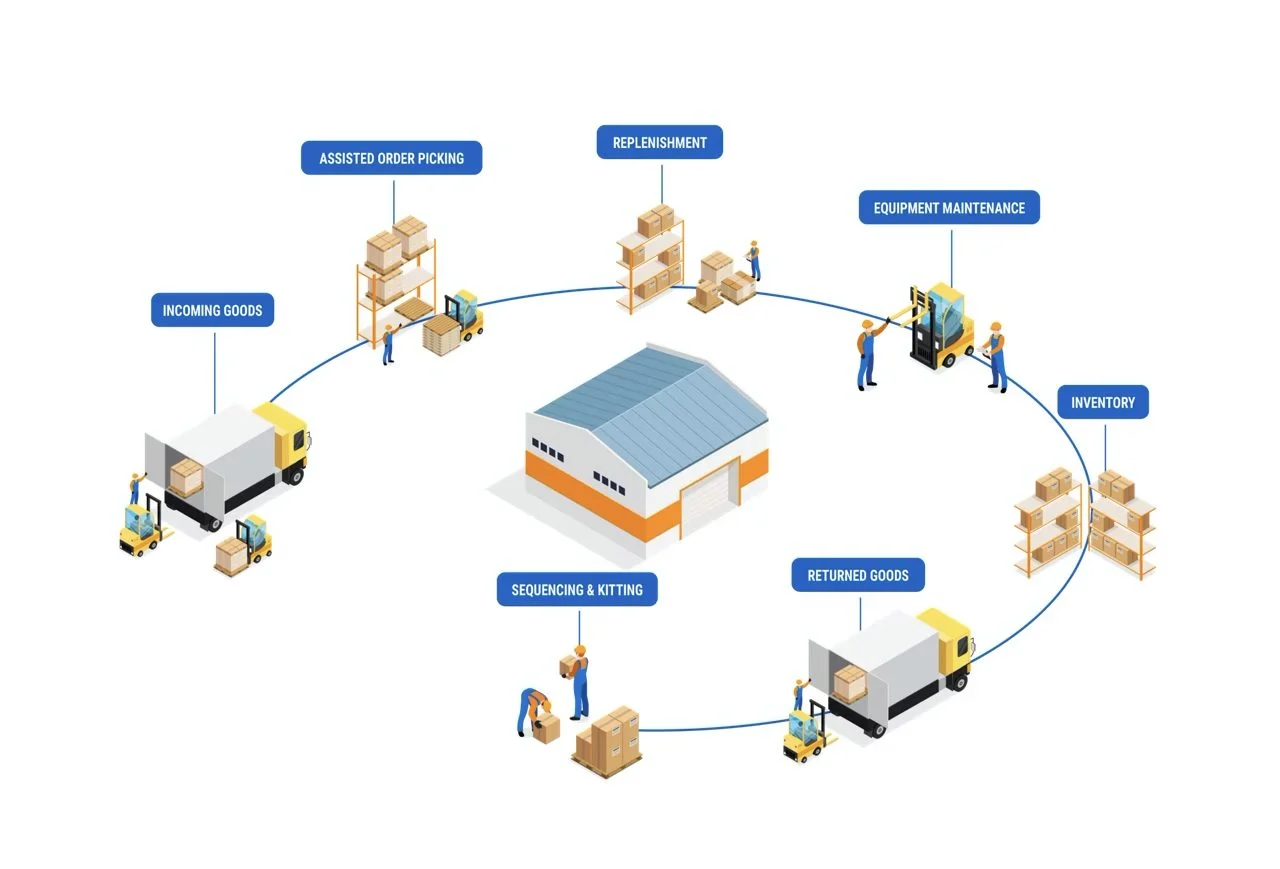
Cross-chain interoperability pertains to the ability of various blockchain networks to communicate, share information, and transfer digital assets seamlessly.
Blockchain technology was initially conceived to power cryptocurrencies like Bitcoin. However, as time elapsed, the technology evolved considerably. Blockchain technology has far-reaching implications across various industries, and its importance is acknowledged worldwide.
The core concept behind this technology is decentralization, where power is not given to one single entity; instead, it is distributed so that we can have a transparent outlook on how actions are handled in the blockchain. The other more desired result of decentralization is that it removes the role of intermediaries, making conducting transactions more cost-effective.
Lastly, using cryptographic techniques ensures the security and integrity of the data; therefore, it is a no-brainer that this technology has gained importance among different sectors of the economy, such as finance, healthcare, and supply chain management.
Even though we have praised the revolution technology brought to the financial world, there were some challenges in implementing this technology everywhere.
The traditional blockchain setups operate in isolation, which hinders seamless network interaction. The limitation gave rise to cross-chain interoperability, a concept designed to enable communication and asset transfer between blockchains.
Now that we know the importance of the concept, we will delve into the intricacies of cross-chain interoperability and its significance in shaping the future of blockchain technology.
Cross-Chain Interoperability: Understanding its Significance
Cross-chain interoperability is the seamless interaction and exchange of assets and data between different blockchain networks. Unlike the traditional blockchain setups, where each network was designed to operate independently, cross-chain interoperability enables data to move seamlessly between disparate chains.
The capability of different blockchains to interact with each other is achieved through various protocols, standards, and technologies that facilitate the exchange of data. By bridging the gap between isolated blockchain networks, cross-chain interoperability holds the potential to unlock new opportunities and drive innovation in the decentralized ecosystem.
Beyond data transfer, blockchain interoperability facilitates seamless asset exchange and execution of smart contracts, enabling diversification of investment portfolios across multiple chains. It promotes liquidity by allowing assets to flow freely between blockchain networks, enhancing market efficiency.
Interoperability fosters collaboration and innovation, enabling developers to leverage the strengths of different chains to create more robust and versatile decentralized applications. Moreover, it reduces reliance on centralized exchanges, empowering users with greater control over their assets and transactions.
By enabling networks to communicate and transact seamlessly, interoperability reduces congestion and bottlenecks, thus improving the overall throughput and performance of decentralized applications. Scalability is essential for supporting the growing demands of decentralized finance (DeFi), non-fungible tokens (NFTs), and other blockchain-based applications.
Solutions for Cross-Chain Interoperability
Various solutions have emerged over the years designed to address the challenges of cross-chain interoperability and facilitate seamless communication and asset transfer between different blockchain networks.
Atomic Swaps

One of the widely recognized solutions that was introduced to address the interoperability challenge is Atomic Swaps. Atomic Swaps allows users to exchange their cryptocurrencies directly between different blockchains without relying on any intermediaries.
The feat is achieved by using smart contracts. Smart contracts are self-executing contracts that automatically execute and enforce the terms of the agreement when predefined conditions are met.
The other advantage derived from them is that they reduce the counterparty risk because the nature of the transaction is irreversible. Atomic swaps typically take place on decentralized exchanges (DEXs) or through specialized Atomic Swap platforms like Komodo’s AtomicDEX or Bisq.
Sidechains

Another approach that has proved instrumental in ensuring interoperability is using Sidechains. Sidechains are independent blockchains that operate alongside the primary or parent blockchain.
They allow for the transfer of data between the main chain and side chains in a seamless manner. Not only do they prove very useful in reducing network congestion, which in turn helps in achieving reduced costs to conduct a transaction, but they also allow developers to experiment with newer features and functionalities on the sidechains without affecting the security and the stability of the main chain.
Wrapped Tokens

Wrapped tokens are another popular solution for achieving interoperability between blockchains. Wrapped tokens are tokenized representations of assets from one blockchain pegged to the value of the corresponding asset on another blockchain. They allow users to trade assets between chains on a decentralized exchange without leaving their native environment.
Example: One typical example of wrapped tokens is Wrapped Bitcoin (WBTC). WBTC is an ERC-20 token on the Ethereum blockchain representing Bitcoin (BTC) in a tokenized form. Each WBTC token is pegged to the value of one Bitcoin, meaning that 1 WBTC token is always equal to 1 BTC.
Here’s how it works:
Tokenization: To create WBTC, users first deposit Bitcoin into a custodian’s address. Once the Bitcoin is deposited, an equivalent amount of WBTC is minted and issued on the Ethereum blockchain.
Pegging: The value of each WBTC token is pegged to the value of one Bitcoin. It ensures that the price of WBTC closely tracks the price of Bitcoin, maintaining a 1:1 ratio.
Trading: Once WBTC is created, users can trade it on decentralized exchanges (DEXs) or decentralized finance (DeFi) applications on the Ethereum blockchain. For example, users can trade WBTC for other Ethereum-based tokens or use it as collateral in lending protocols.
Redemption: When users want to redeem their WBTC for Bitcoin, they can burn their WBTC tokens, which removes them from circulation, and then withdraw an equivalent amount of Bitcoin from the custodian’s address.
WBTC enables users to access the liquidity and functionality of the Ethereum ecosystem while still maintaining exposure to the value of Bitcoin
Interledger Protocols

The Interledger Protocols are blockchain-based protocols facilitating seamless payments across various payment networks.
These protocols enable the connection of ledgers from multiple banks or financial institutions, eliminating the need for intermediaries or central authorities.
By directly linking these disparate ledgers, they aim to streamline cross-border transactions, promising cost reduction and faster processing times.
Example: Ripple’s Interledger Protocol facilitates the transfer of payments across various digital asset ledgers while safeguarding both the sender and recipient from the risks associated with intermediary failures.
It establishes a global network of interconnected networks, enabling seamless transactions of diverse forms of value through secure multi-hop payments and intelligent routing.
Ripple Labs utilizes this protocol to establish connections between banking systems across borders, leveraging the Ripple (XRP) token to settle payments efficiently between global banks. The infrastructure enables efficient and reliable cross-border transactions, enhancing the accessibility and effectiveness of international payment systems.
Blockchain Bridges

Blockchain bridges serve as essential pathways to connect different blockchain networks, enabling asset and information transfer. These bridges act as connectors, allowing users to move assets between chains while maintaining security and transparency.
Example: Binance Bridge allows users to move assets between Ethereum and the BNB Chain (formerly Binance Smart Chain).
Users deposit Ethereum tokens onto the bridge, receiving equivalent wrapped tokens (BTokens) on the BNB Chain for DeFi, gaming, or other purposes. These (BTokens) can be converted back to their original form anytime.
These are some general examples that focus on reaching interoperability; we can also look at some projects working on achieving these similar goals.
Chainlink
Chainlink is developing the Cross-Chain Interoperability Protocol (CCIP) to establish an open-source standard for facilitating communication and token transfers across different blockchain networks.
CCIP aims to create a universal connection among numerous blockchain networks by employing a standardized interface, thereby simplifying the process of building cross-chain applications and services.
Wormhole
Wormhole introduces a generic interoperability protocol allowing the transfer of tokens and messages across various blockchain networks.
Through Wormhole, messages from a source chain are overseen by a network of guardians who validate and facilitate transfers to target chains. Developers leveraging Wormhole can construct cross-chain decentralized applications, commonly known as Dapps.
These applications provide multiple functionalities like cross-chain liquidity, data sharing, and more.
LayerZero
LayerZero is an omnichain interoperability protocol enabling lightweight message passing between blockchains, offering secure and dependable message delivery with adjustable trustlessness.
Adjustable trustlessness in LayerZero is an intriguing concept that deviates from the typical “all-or-nothing” approach to trust in blockchain bridges.
The concept suggests that users are offered multiple levels of trust that cater to their need to decide which trust option they want to select. Here’s how it might work:
- High Trust Option: The high trust option utilizes a network of pre-vetted validators for fast and efficient message transfers, similar to centralized bridges. The process involves trusting these validators to complete your transfer; in return, they provide speed and ease of use.
- Low Trust Option: The low trust option leverages a more decentralized network with community-run validators that can provide users with increased security. However, they must compromise speed and face enhanced complexity.
LayerZero employs ultra-light nodes (ULN) that act as smart contracts to furnish block headers of other bridged chains to enhance efficiency. The ULN functions only upon request and communicates with an oracle and a relayer through the LayerZero endpoint, ensuring lightweight and efficient cross-chain communication.
Challenges in Achieving Cross-Chain Interoperability
Although cross-chain interoperability has proved instrumental in providing dynamic solutions to various problems, there are still some challenges associated with it that need to be addressed.
Technical Hurdles
One of the primary hurdles in implementing this concept is the technical complexity of establishing this connection between different blockchain networks. The complexity arises because each blockchain has its consensus mechanism, intelligent contract languages, and cryptographic algorithms. You have to overcome these challenges to ensure smooth communications between channels. Achieving this compatibility and s standard communication across multiple chains requires further innovative solutions and collaboration within the blockchain community.
Security Concerns
The other fundamental challenge this concept faces is the security concerns. Interoperability while providing various solutions also opens the network to new attack vectors and vulnerabilities that malicious actors can exploit. The only purpose of these actors is to compromise the integrity of the network and steal assets.
Those networks building towards this concept must take robust security measures to ensure that users’ funds are not compromised and maintain their trust in the network they are using.
Governance and Coordination issues
These two issues further complicate the implementation of cross-chain interoperability solutions. Establishing stakeholder consensus and coordinating updates and changes across multiple blockchain networks require effective governance mechanisms and coordination frameworks.
With clear governance structures, interoperability initiatives may avoid delays, conflicts, or failure to launch.
Moreover, scalability remains a pressing challenge in achieving cross-chain interoperability at scale. As blockchain networks grow in size and complexity, ensuring that interoperability solutions can handle increasing transaction volumes and data throughput becomes crucial.
Scalability solutions such as sharding, layer two scaling, and optimized consensus mechanisms support the seamless exchange of assets and data between disparate chains. The good thing is that these solutions are being implemented in today’s evolving blockchain environment.
Real-Life Application Examples
Cross-chain interoperability is not just theoretical; it has tangible, real-life applications across various industries.
Decentralized Finance (DeFi)

One of the most prominent areas where cross-chain interoperability impacts is decentralized finance (DeFi). DeFi platforms leverage interoperable protocols to enable users to seamlessly exchange assets and access a wide range of financial services, including lending, borrowing, and trading, across different blockchain networks.
For example, platforms like Uniswap and SushiSwap allow users to swap tokens from different chains directly within their interfaces, thanks to cross-chain interoperability solutions.
Non-Fungible Tokens (NFTs)

In gaming and non-fungible tokens (NFTs), cross-chain interoperability opens up new possibilities for interoperable gaming assets and cross-chain trading of NFTs.
Gamers can use interoperable protocols to transfer in-game assets between different gaming platforms or trade rare digital collectables across disparate blockchains.
It fosters a more vibrant and interconnected gaming ecosystem, where users can seamlessly interact with each other and access a broader range of gaming experiences.
Supply chain management

Supply chain management is another area where cross-chain interoperability holds immense potential.
By leveraging interoperable blockchain networks, supply chain participants can track and verify products across multiple chains, ensuring transparency, traceability, and authenticity throughout the supply chain.
Interoperable protocols enable seamless data exchange between stakeholders, facilitating more efficient and transparent supply chain operations.
Cross-border payments

Cross-border payments represent another compelling use case for cross-chain interoperability. Blockchain-based solutions can streamline international transactions, reduce fees, and accelerate settlement times by enabling interoperable payment networks.
Users can transfer value across blockchain networks without intermediaries, making cross-border payments faster, cheaper, and more accessible to individuals and businesses worldwide.
Summary
Cross-chain interoperability revolutionizes blockchain technology by enabling seamless asset transfer and communication across diverse networks.
Despite challenges, solutions like atomic swaps and wrapped tokens, alongside projects such as Chainlink’s CCIP and Wormhole, showcase ongoing progress.
Real-world applications across industries like decentralized finance and supply chain management highlight its transformative impact.
With further development and collaboration, cross-chain interoperability promises to drive efficiency and innovation in decentralized ecosystems worldwide.




